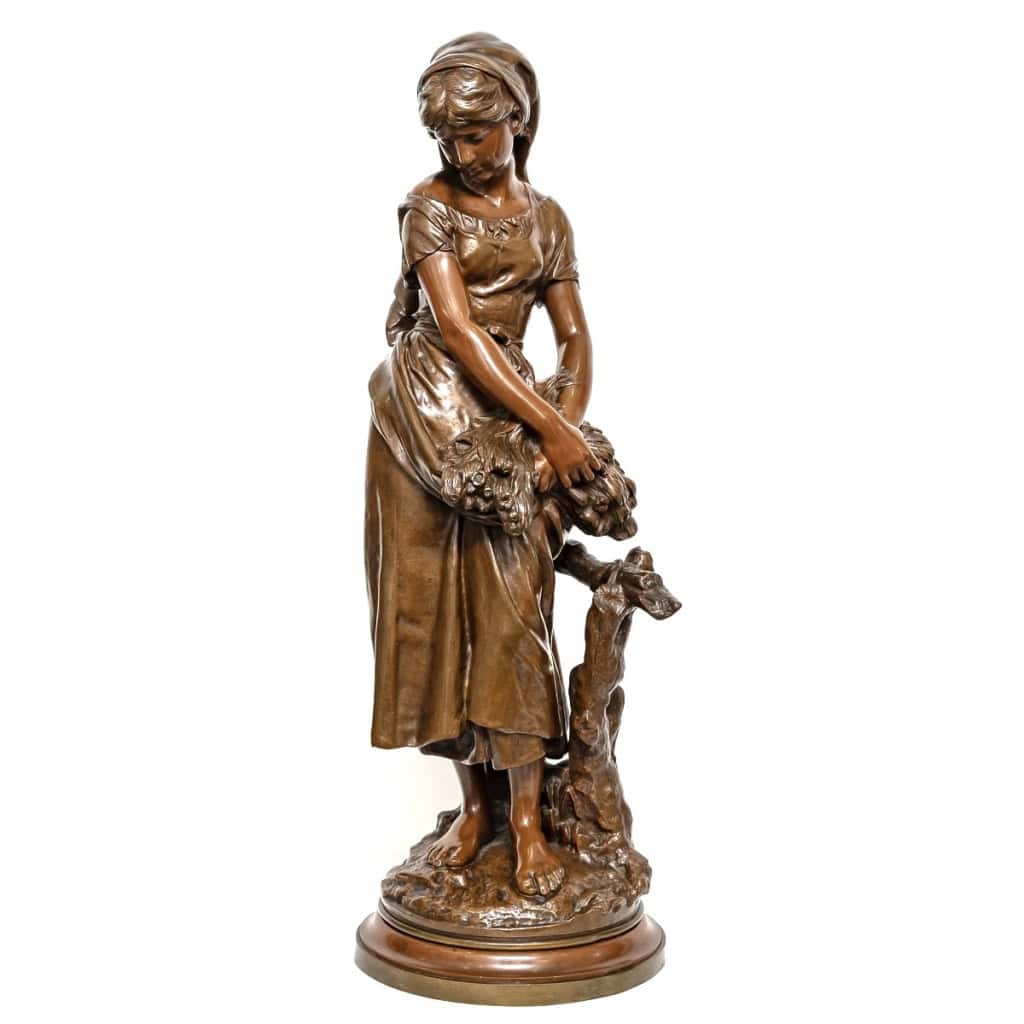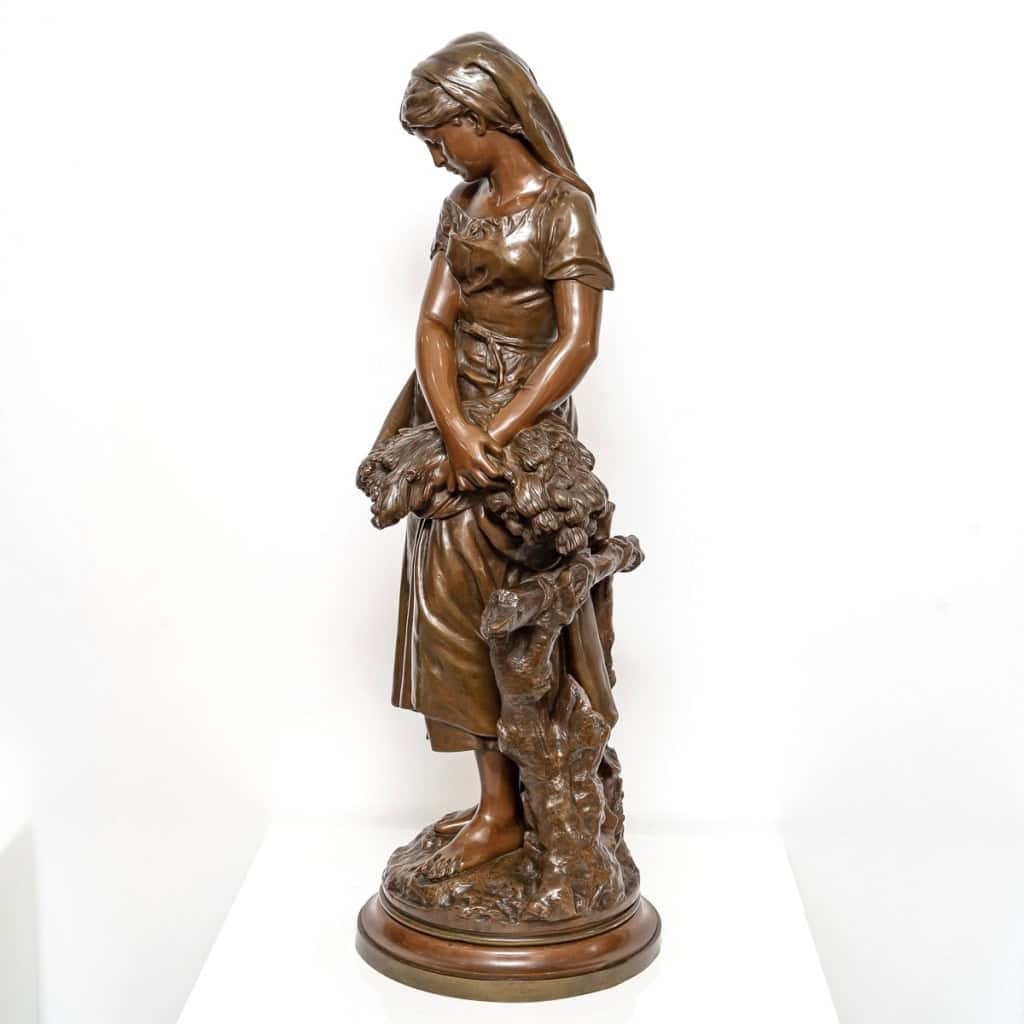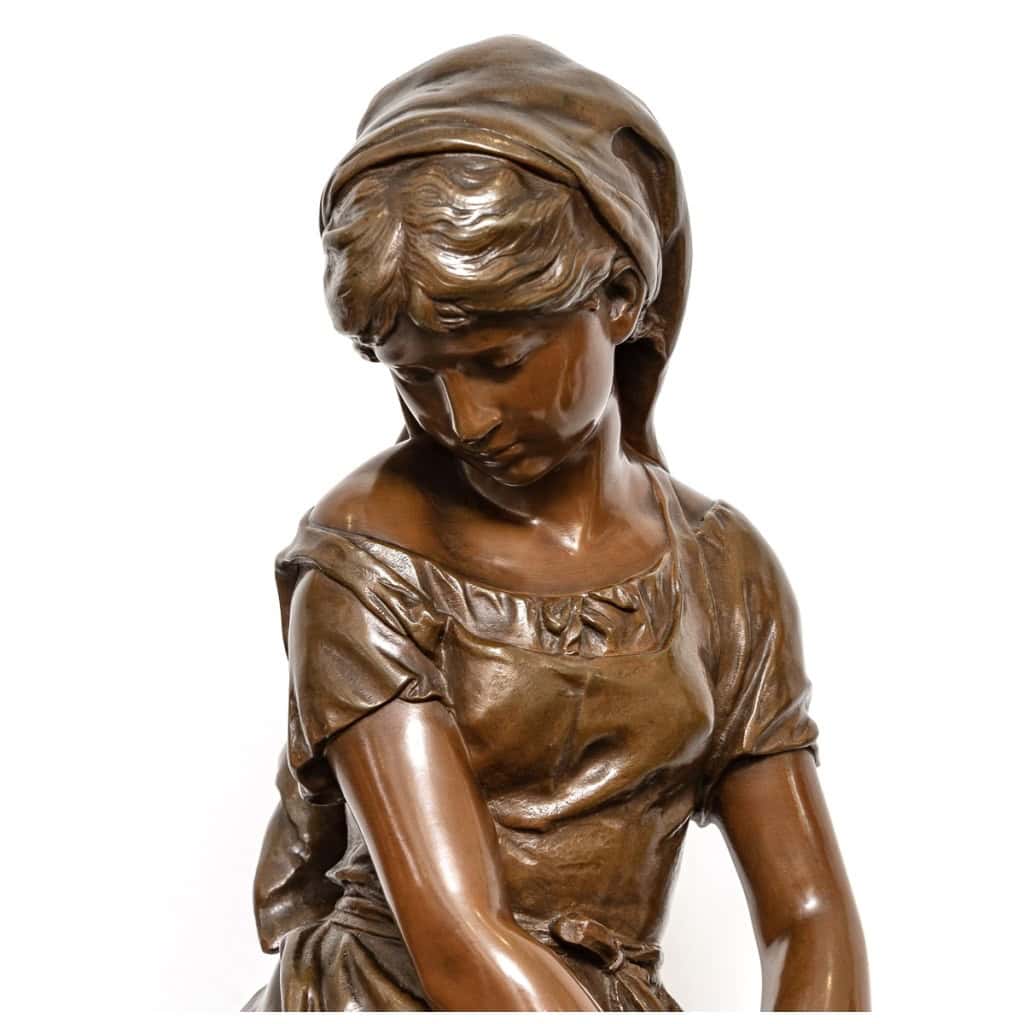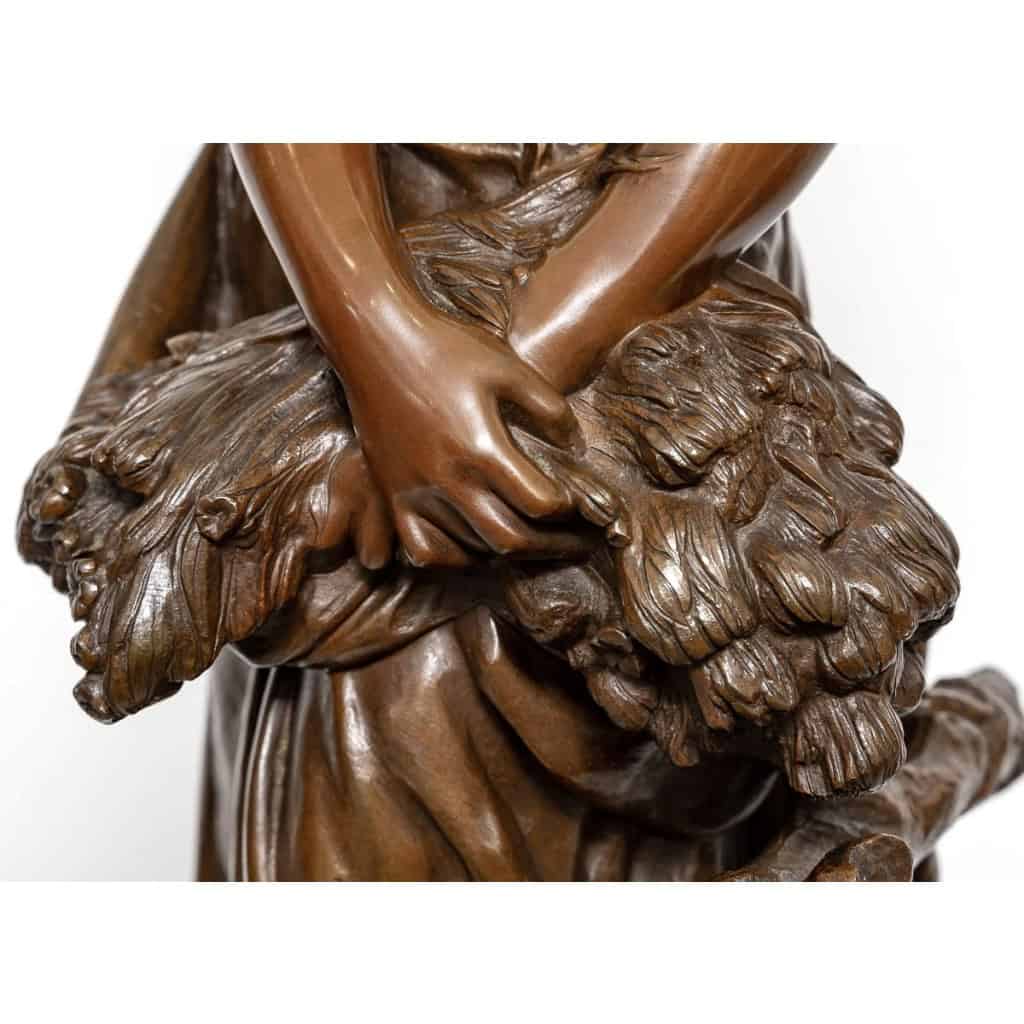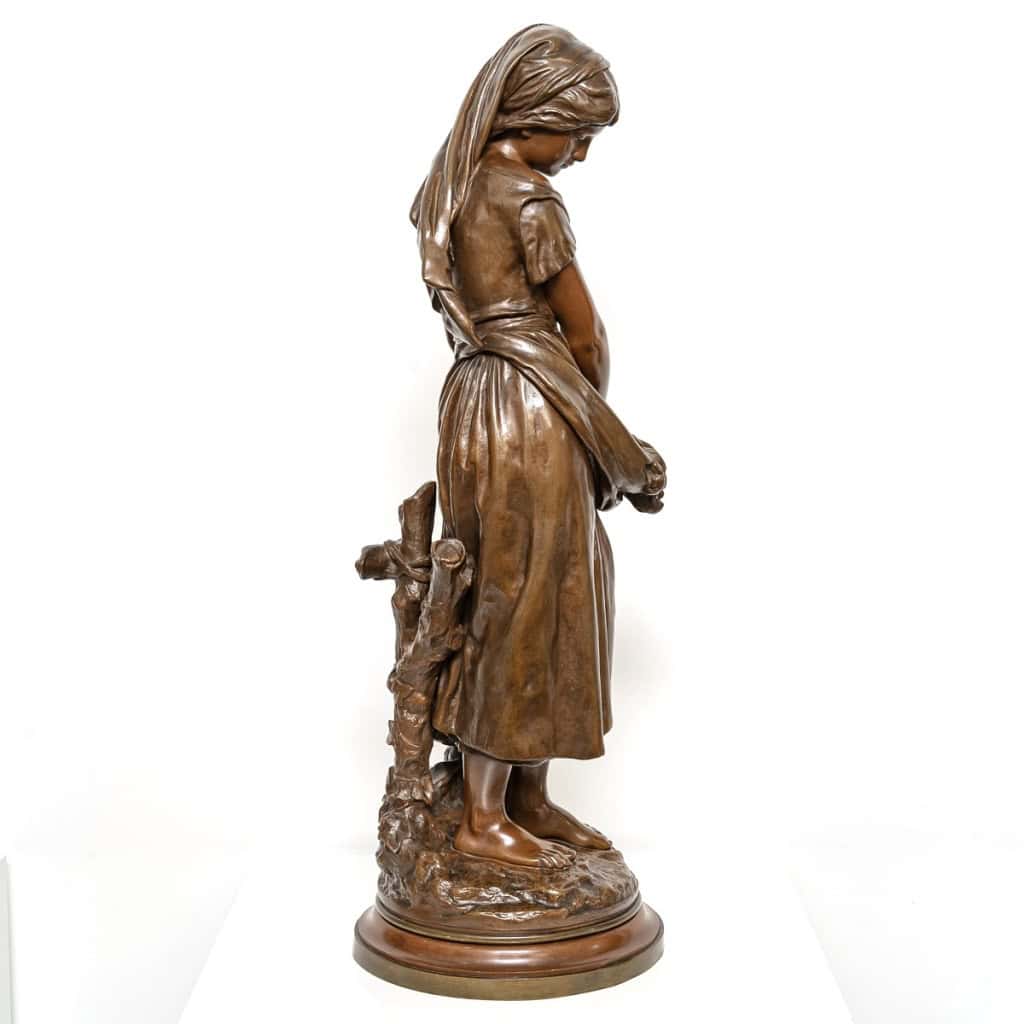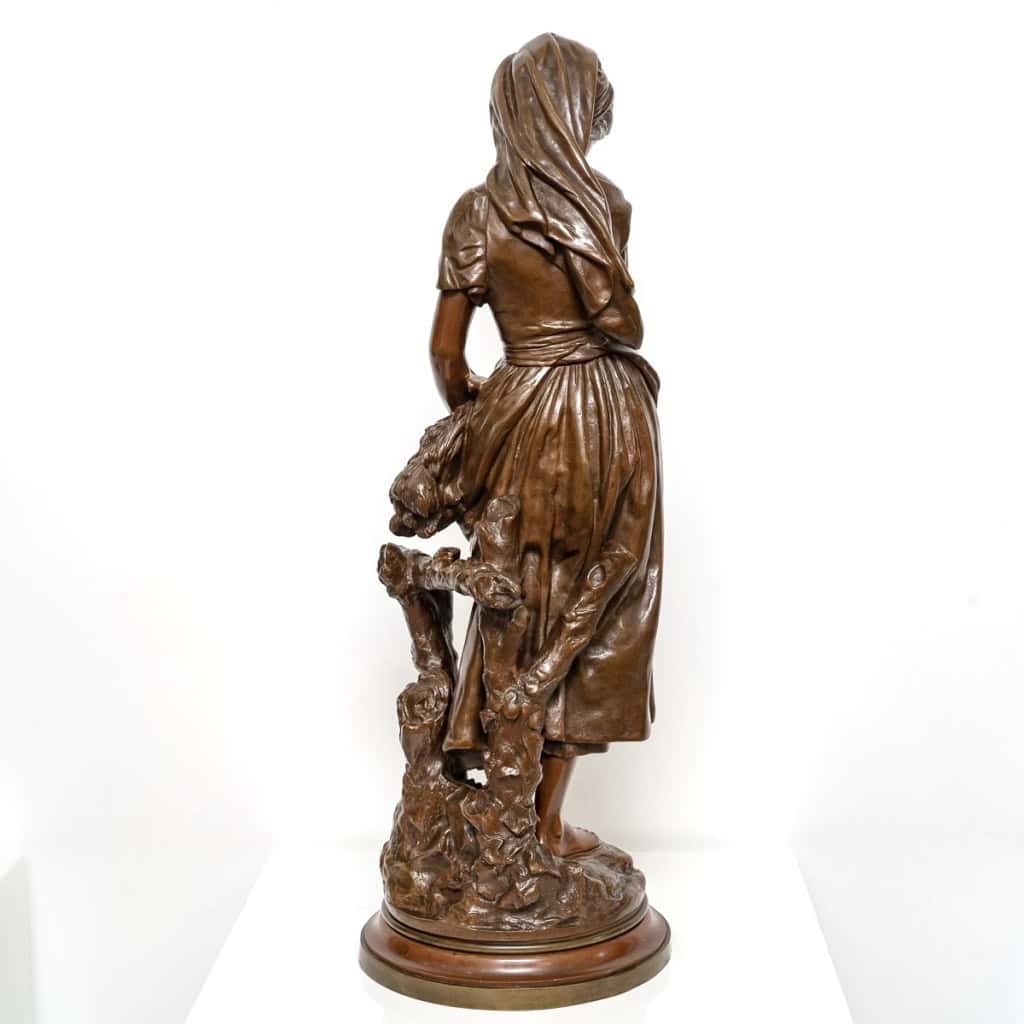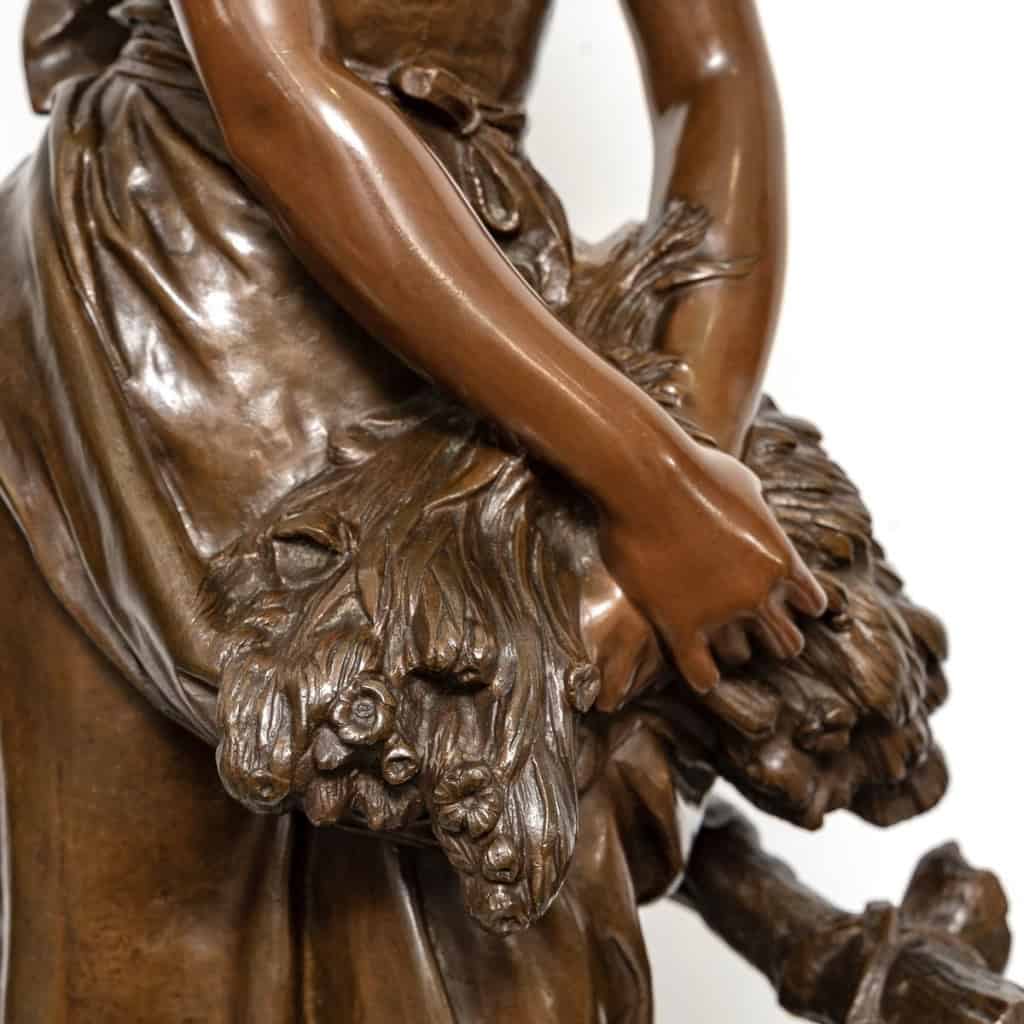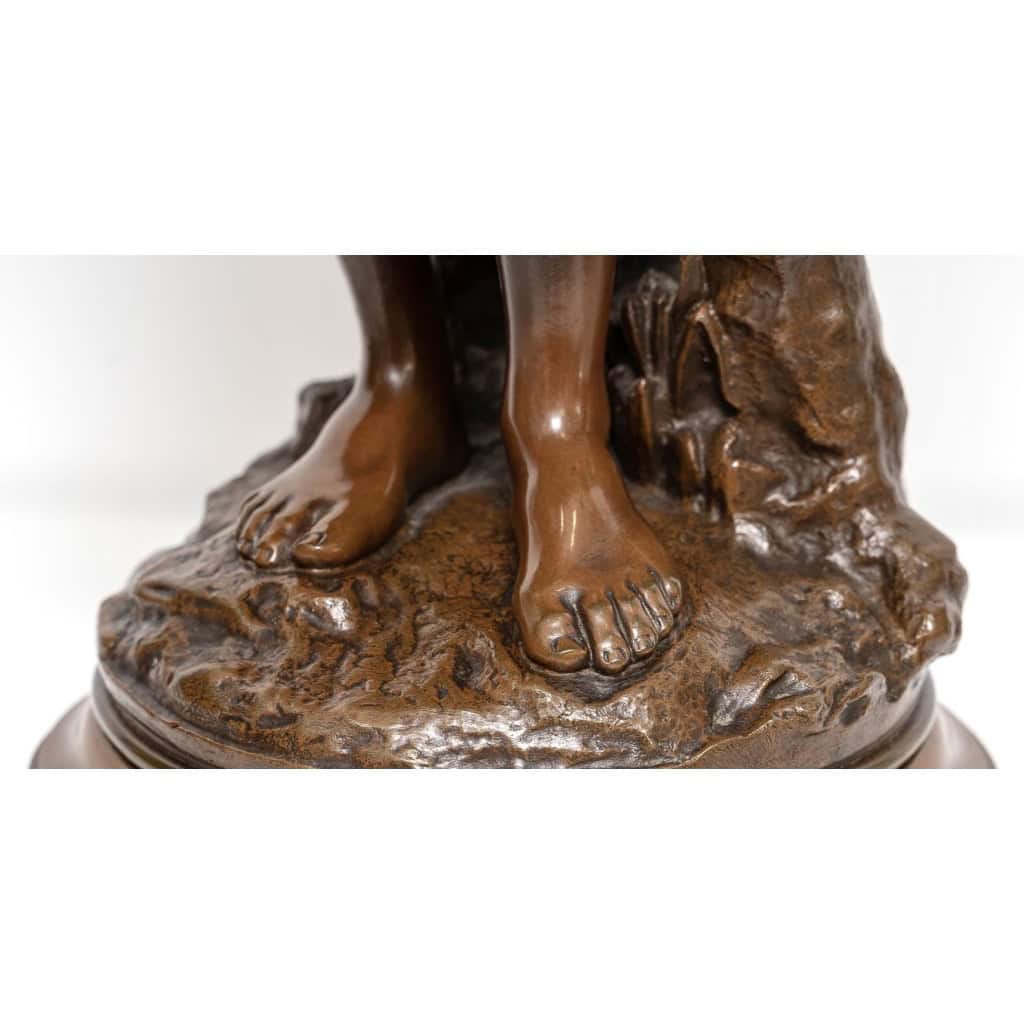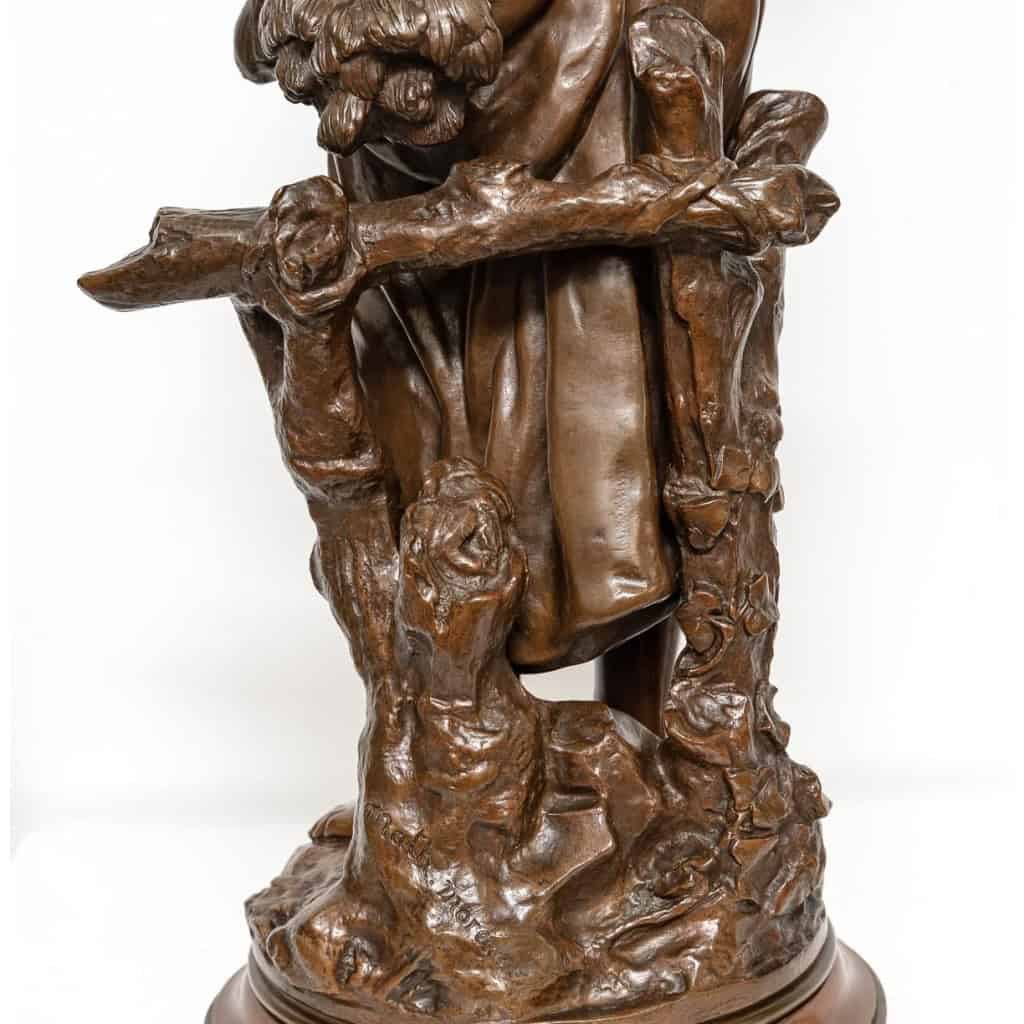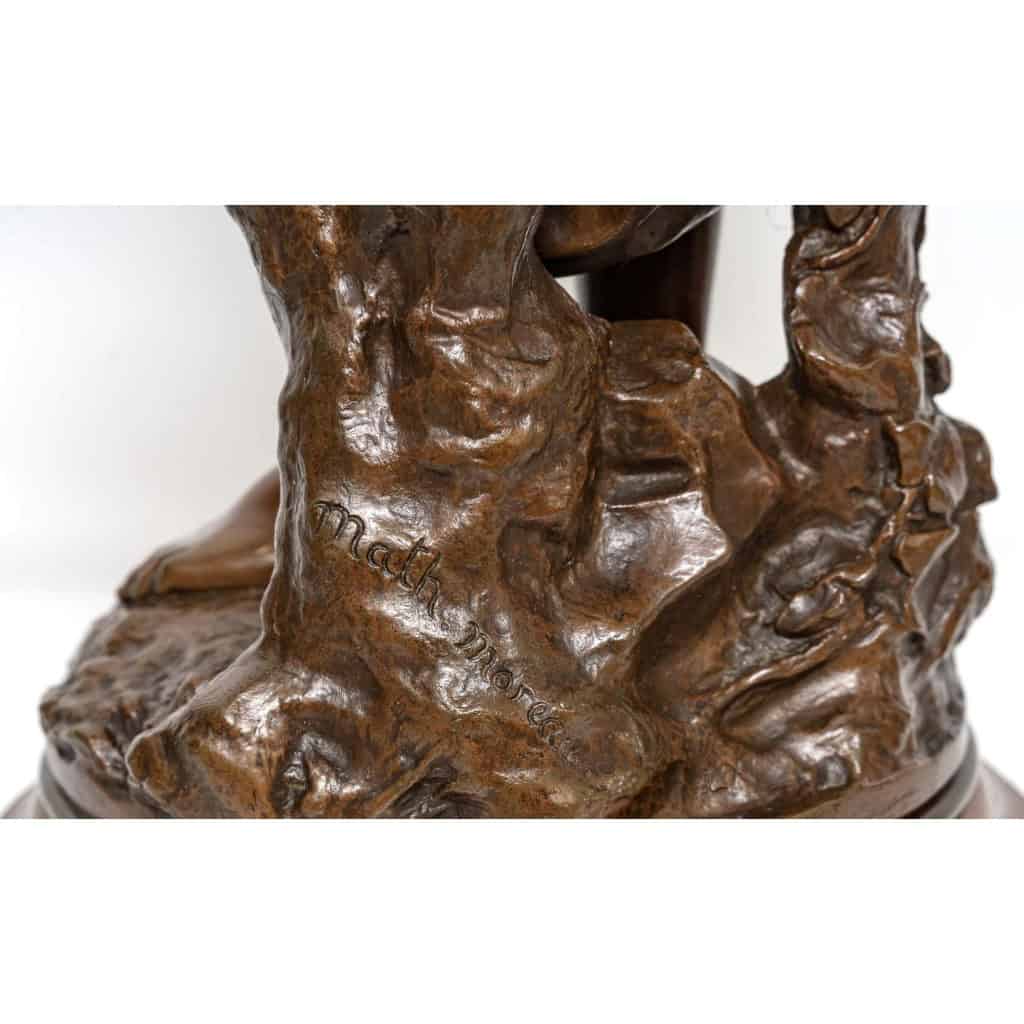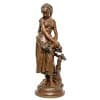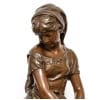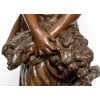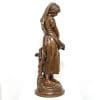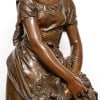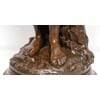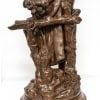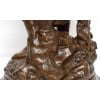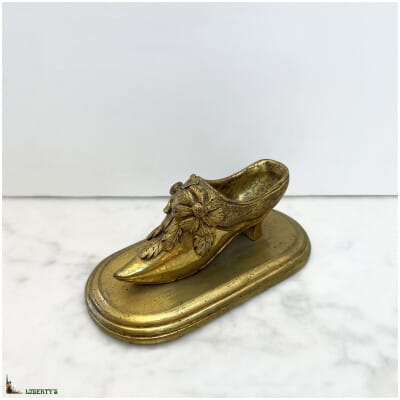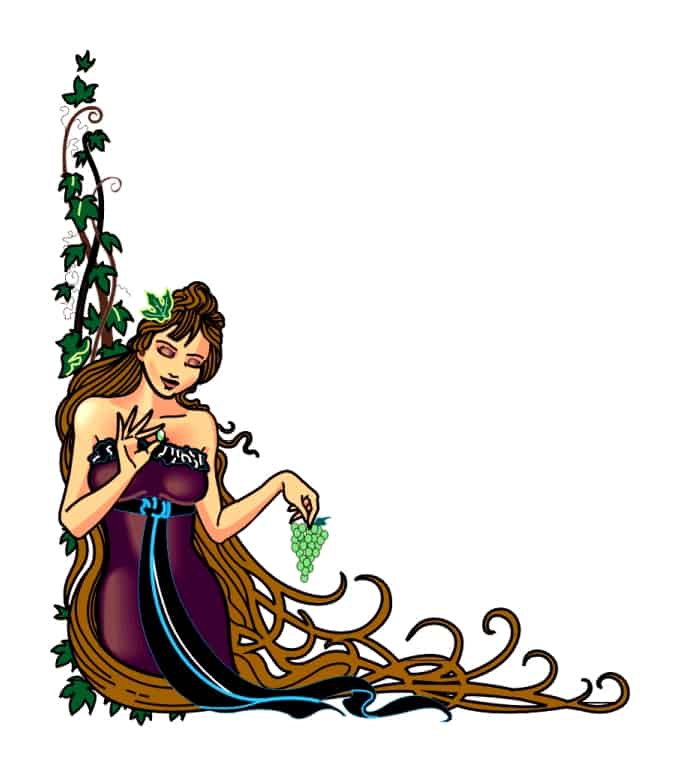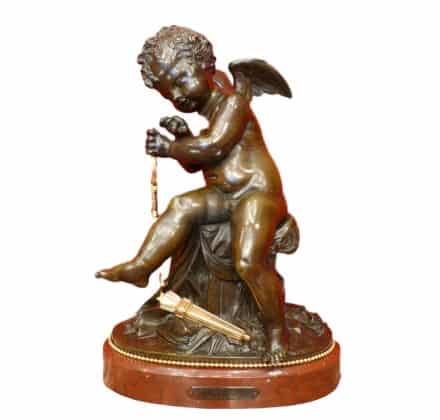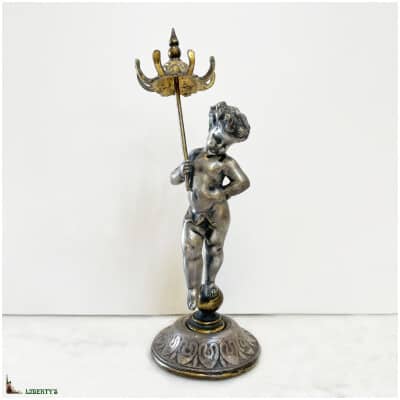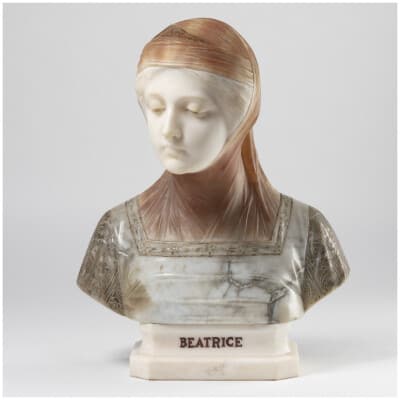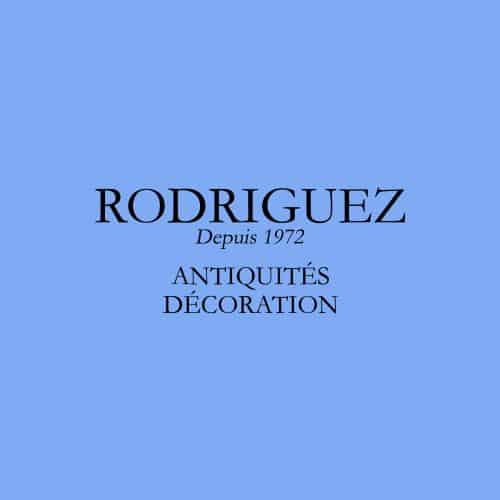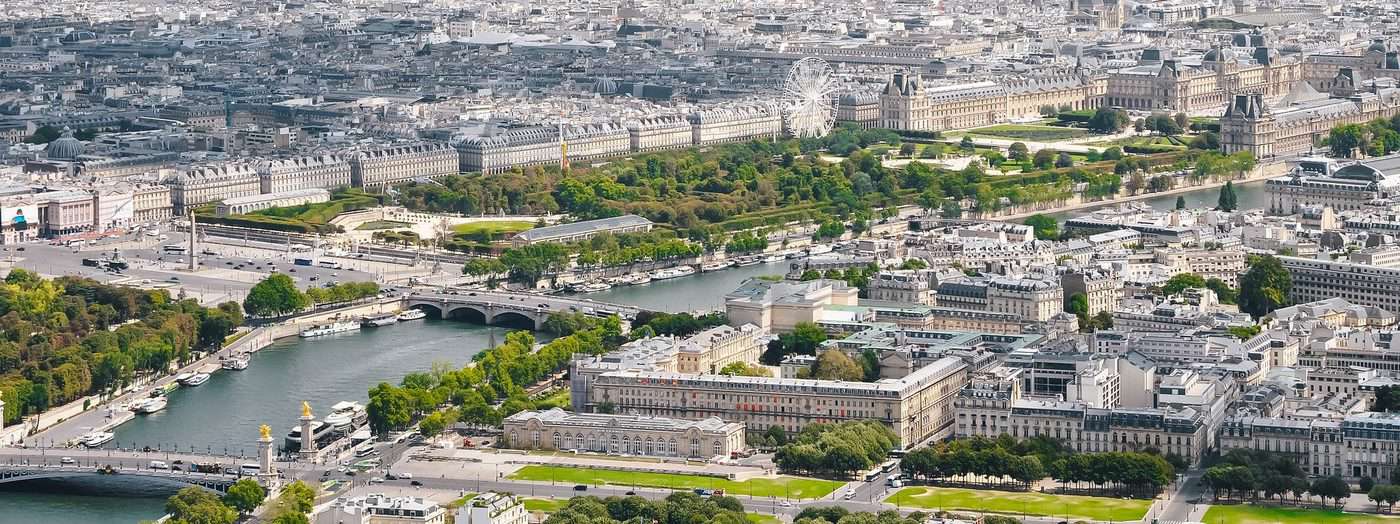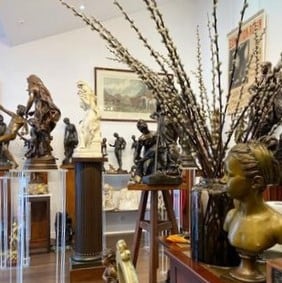
CaTaLogUE Des PucEs
Sculpture – Jeune Fille à La Gerbe De Blé , Mathurin Moreau (1822-1912) – Bronze
Disponibilité :
EN STOCK€2.600,00
Épreuve en bronze figurant une jeune fille , à la gerbe de blé par le sculpteur Mathurin Moreau (1822-1912) .
La gerbe de blé , depuis tous temps , est le symbole du bonheur et de la prospérité .
Sculpture reposant sur une base circulaire tournante .
Signature du sculpteur « Math . Moreau » en creux , sur la base naturaliste richement ornée .
Sculpture d’édition ancienne , période seconde partie du XIX ème siècle .
Très bon état de conservation et de patine .
Hauteur : 59 cm
Bronze proof representing a young girl , with a sheaf of wheat by the sculptor Mathurin Moreau (1822-1912) .
The sheaf of wheat , since time immemorial , has been the symbol of happiness and prosperity .
Sculpture resting on a rotating circular base .
Signature of the sculptor « Math. Moreau » intaglio , on the back of the sculpture .
Sculpture of old edition , period second half of the 19th century .
Very good state of conservation and patina .
Height : 59 cm

Mathurin Moreau (1822 – 1912)
Sculpteur français renommé pour ses sculptures décoratives , Mathurin Moreau est le fils du sculpteur Jean-Baptiste Moreau .
Ses frères Hippolyte et Auguste sont également sculpteurs .
Il est admis à l’École des Beaux-arts de Paris en 1841 dans les Ateliers de Jules Ramey et d’Auguste Dumont .
Il remporte le Second Prix de Rome en 1842 avec » Diodème enlevant le Palladium » .
Il débute au Salon des Artistes Français en 1848 , et s’y fait remarquer avec la statue « L’ Élégie » .
Il obtient une médaille de seconde classe à l’ Exposition Universelle de 1855 à Paris , puis une médaille de première classe en 1878 .
En 1897, pour sa dernière participation au Salon , il est couronné par une médaille d’honneur .
Entre 1849 à 1879 , Mathurin Moreau collabore avec la fonderie d’art du Val d’Osne et en devient l’un des administrateurs , mais il fournit également des modèles à la Compagnie des bronzes de Bruxelles , à la Société des Bronzes de Paris , et expose à l’Union Centrale des Beaux-Arts appliqués dans les années 1880 .
À partir de 1879 et jusqu’à sa mort , Mathurin Moreau est élu maire du 19e arrondissement de Paris.
Il est élevé au grade de Chevalier de la Légion d’Honneur en 1865 et d’officier en 1885 .
Le Musée d’Orsay conserve le portrait photographique de Mathurin Moreau .
Mathurin Moreau (1822-1912)
A French sculptor renowned for his decorative sculptures , Mathurin Moreau is the son of sculptor Jean-Baptiste Moreau .
His brothers Hippolyte and Auguste are also sculptors .
He was admitted to the Paris School of Fine Arts in 1841 in the workshops of Jules Ramey and Auguste Dumont .
He won the second prize of Rome in 1842 with « Diodème removing the Palladium » .
He made his debut at The Salon of French Artists in 1848 and stood out there with the statue « L’Élégie » .
He obtained a second class medal at the Universal Exhibition of 1855 in Paris , then a first class medal in 1878 .
In 1897 , for his last participation in the Salon , he was crowned with a medal of honor .
Between 1849 and 1879 , Mathurin Moreau collaborated with the Val d’Osne art foundry and became one of its administrators , but he also provided models for the Company of bronzes of Brussels , The Society of Bronzes of Paris and exhibited at the Union Centrale des Applied Fine Arts in the 1880s.
From 1879 until his death, Mathurin Moreau was elected mayor of the 19th arrondissement of Paris.
He was elevated to the rank of Knight of the Legion of Honor in 1865 and officer in 1885 .
The Orsay Museum holds the photographic portrait of Mathurin Moreau .
Disponibilité :
EN STOCK| Lieux | |
|---|---|
| Siècle | |
| Style | |
| Type d'Objet |
